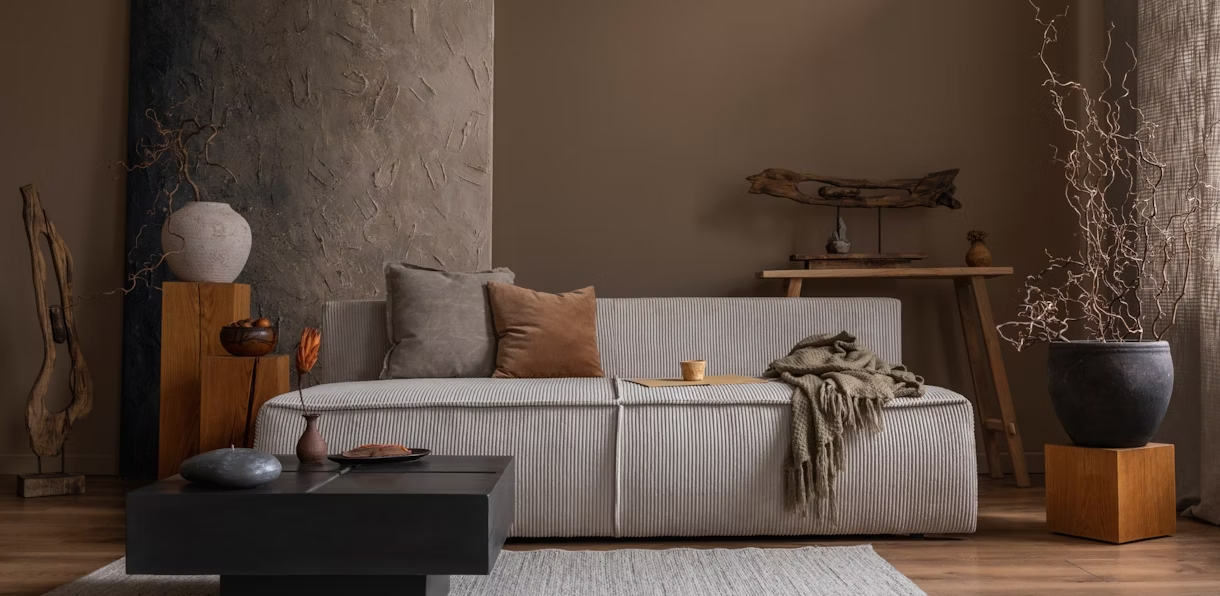Wabi-Sabi: Embracing Imperfection in Home Design
 Wabi-Sabi is a Japanese aesthetic that celebrates imperfection. This philosophy finds beauty in the transient nature of life. It encourages us to appreciate the simplicity and authenticity of our surroundings. In home design, Wabi-Sabi offers a refreshing perspective that contrasts sharply with the prevalent pursuit of perfection. By incorporating its principles, we can create spaces that resonate more deeply with our personal stories and experiences.
Wabi-Sabi is a Japanese aesthetic that celebrates imperfection. This philosophy finds beauty in the transient nature of life. It encourages us to appreciate the simplicity and authenticity of our surroundings. In home design, Wabi-Sabi offers a refreshing perspective that contrasts sharply with the prevalent pursuit of perfection. By incorporating its principles, we can create spaces that resonate more deeply with our personal stories and experiences.
Understanding Wabi-Sabi
Wabi-Sabi derives from two intertwined concepts. “Wabi” reflects a rustic simplicity, a quiet elegance that often embraces minimalism. It appreciates the beauty found in natural materials and forms. “Sabi” focuses on the passage of time. It celebrates the aging process, where wear and tear become markers of history and character. When combined, Wabi-Sabi encourages us to find beauty in the imperfect and the incomplete.
This philosophy challenges the modern obsession with flawless designs. In today’s fast-paced society, many create homes that resemble showrooms—often cold and uninviting. Such spaces may look stunning but often lack the warmth and authenticity of a lived-in environment. By embracing Wabi-Sabi in home design, we invite a sense of tranquility and a connection to nature and our personal narratives.
Incorporating Wabi-Sabi in Home Decor
Now, how can you embrace Wabi-Sabi in your home design? Here are several practical suggestions to help you incorporate this philosophy seamlessly.
Focus on Natural Materials
One of the simplest ways to adopt Wabi-Sabi is by using natural materials. Look for wood, stone, and clay. These materials connect us to the earth. They show beauty through their organic imperfections. For example, consider reclaimed wood furniture. Each scar and scratch tells a story, adding depth and interest to any room. When choosing ceramics or textiles, opt for handmade items. Their unique characteristics enhance the charm of your space.
Embrace Simplicity
Wabi-Sabi urges us to embrace simplicity. A minimalist approach does not mean sparse or sterile. Instead, it focuses on functionality and intention. Choose decor items that serve a purpose or evoke a specific memory. Create spaces that feel open and airy. Limit clutter to promote a sense of calm. In doing so, you let the beauty of imperfections shine through.
Celebrate the Unique
Incorporating Wabi-Sabi means celebrating uniqueness. Avoid cookie-cutter designs. Rather, seek out pieces that have character and history. Antique furniture or art with a story carries energy and depth. A well-worn sofa invites you to relax and unwind. Each scrape on its surface adds to its narrative. Layer textures and materials for a cozy vibe. Mix old and new elements to create a rich tapestry of life experiences within your home.
Allow for Flexibility
A Wabi-Sabi-inspired space should be adaptable. Design spaces that reflect your evolving journey. As we grow, so do our spaces. Allow them to change with us. This can mean rearranging furniture or introducing new elements that reflect your current taste. Embrace changes, as they signify growth and evolution.
Creating a Wabi-Sabi Home
Creating a Wabi-Sabi home requires mindfulness. Begin by assessing your space. Identify areas that feel over-styled or overly polished. Gradually remove items that no longer serve you or evoke joy. Introduce decor that aligns with the Wabi-Sabi philosophy. Whether it’s a handwoven basket or a simple wooden table, each piece should inspire a connection to your environment.
Incorporate plants into your design. Living elements breathe life into your home. They also remind us of the beauty of impermanence. As plants grow, wither, and sometimes die, they mirror the natural cycles of life. Choose plants that thrive indoors, such as succulents or ferns. Their organic forms and textures enhance your space’s Wabi-Sabi qualities.
Finally, remember that Wabi-Sabi is about acceptance. It invites us to embrace our own imperfections and those in our surroundings. As we cultivate spaces that reflect this philosophy, we create homes where we feel rooted and at peace.
Conclusion
Wabi-Sabi is more than just a design trend. It is a way of living that encourages us to appreciate the beauty in imperfection. By incorporating its principles into home design, we create spaces that resonate with our individuality and the stories we carry. In a world obsessed with perfection, Wabi-Sabi offers an opportunity to foster authenticity. Embrace the imperfections. Celebrate the journey of life. Through this philosophy, we can transform our homes into havens that reflect our true selves.


